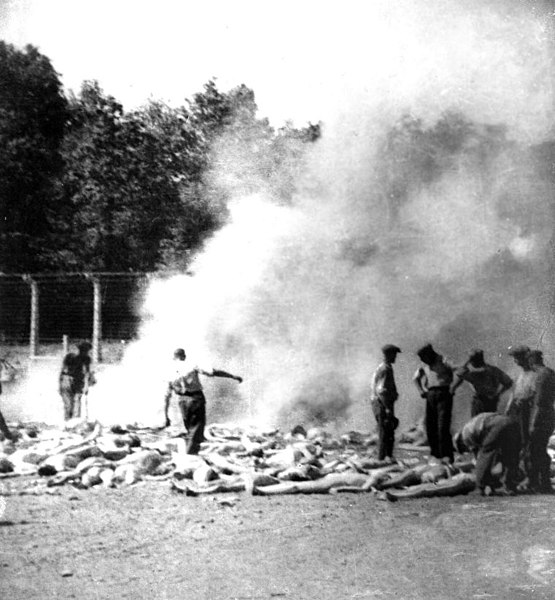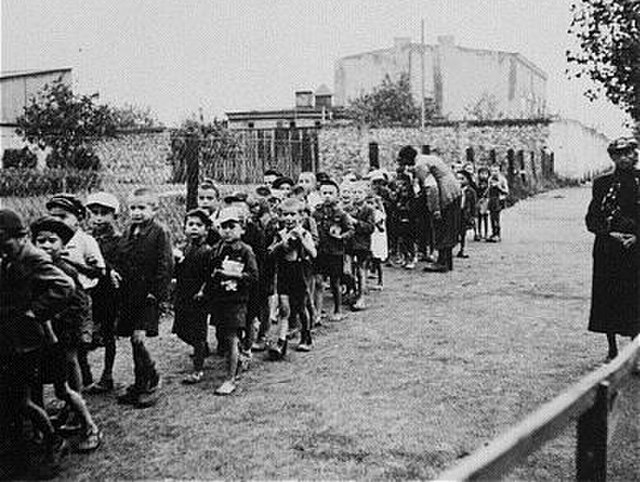"Polish death camp" controversy
The terms "Polish death camp" and "Polish concentration camp" have been controversial as applied to the concentration camps and extermination camps established by Nazi Germany in German-occupied Poland. The terms have been criticized as misnomers. The terms have occasionally been used by politicians and news media in reference to the camps' geographic location in German-occupied Poland. However, Polish officials and organizations have objected to the terms as misleading, since they can be misconstrued as meaning "death camps set up by Poles" or "run by Poland". Some Polish politicians have portrayed inadvertent uses of the expression by foreigners as a deliberate disinformation campaign.
Czesława Kwoka, a Polish Catholic girl, 14 when she was murdered by the Nazi Germans at Auschwitz. 230,000 children, most of them Jewish, were murdered in the German camp.
Poles publicly hanged by the Germans for helping Jews in hiding, Przemyśl, 6 September 1943
Nazi Germany used six extermination camps, also called death camps, or killing centers, in Central Europe during World War II to systematically murder over 2.7 million people – mostly Jews – in the Holocaust. The victims of death camps were primarily murdered by gassing, either in permanent installations constructed for this specific purpose, or by means of gas vans. The six extermination camps were Chełmno, Belzec, Sobibor, Treblinka, Majdanek and Auschwitz-Birkenau. Extermination through labour was also used at the Auschwitz and Majdanek death camps. Millions were also murdered in concentration camps, in the Aktion T4, or directly on site.
Extermination camp
Two of the four crematoria at Auschwitz II (Birkenau).
Members of the Sonderkommando burned the bodies of victims in the fire pits at Auschwitz II-Birkenau, when the crematoria were overloaded. (August 1944)
Jewish children during deportation to the Chełmno extermination camp






